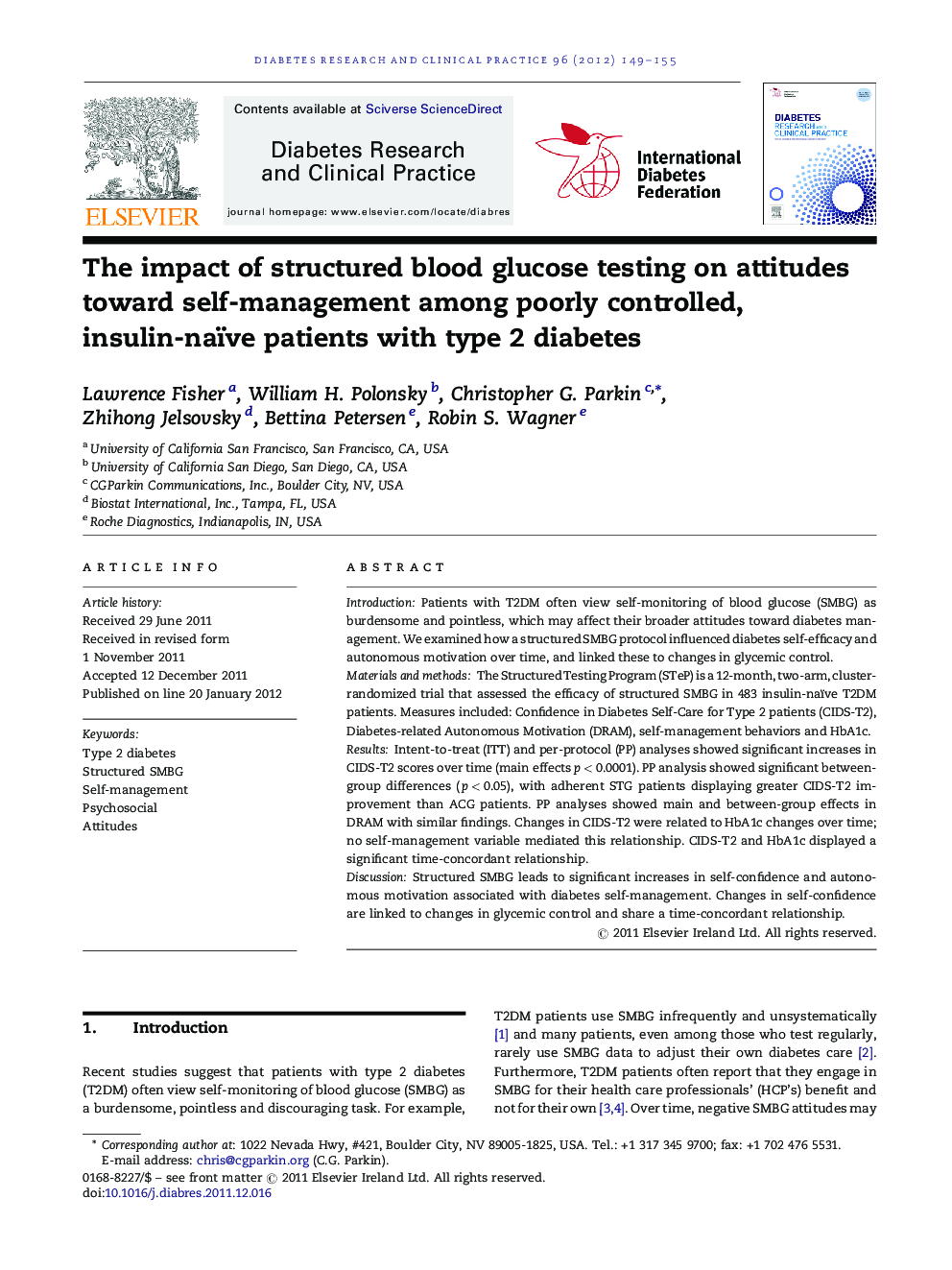| Article ID | Journal | Published Year | Pages | File Type |
|---|---|---|---|---|
| 2796883 | Diabetes Research and Clinical Practice | 2012 | 7 Pages |
IntroductionPatients with T2DM often view self-monitoring of blood glucose (SMBG) as burdensome and pointless, which may affect their broader attitudes toward diabetes management. We examined how a structured SMBG protocol influenced diabetes self-efficacy and autonomous motivation over time, and linked these to changes in glycemic control.Materials and methodsThe Structured Testing Program (STeP) is a 12-month, two-arm, cluster-randomized trial that assessed the efficacy of structured SMBG in 483 insulin-naïve T2DM patients. Measures included: Confidence in Diabetes Self-Care for Type 2 patients (CIDS-T2), Diabetes-related Autonomous Motivation (DRAM), self-management behaviors and HbA1c.ResultsIntent-to-treat (ITT) and per-protocol (PP) analyses showed significant increases in CIDS-T2 scores over time (main effects p < 0.0001). PP analysis showed significant between-group differences (p < 0.05), with adherent STG patients displaying greater CIDS-T2 improvement than ACG patients. PP analyses showed main and between-group effects in DRAM with similar findings. Changes in CIDS-T2 were related to HbA1c changes over time; no self-management variable mediated this relationship. CIDS-T2 and HbA1c displayed a significant time-concordant relationship.DiscussionStructured SMBG leads to significant increases in self-confidence and autonomous motivation associated with diabetes self-management. Changes in self-confidence are linked to changes in glycemic control and share a time-concordant relationship.
